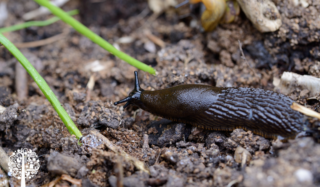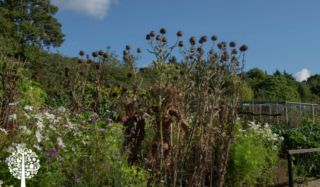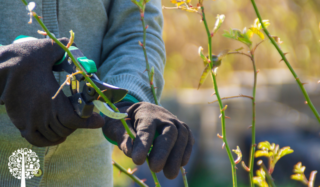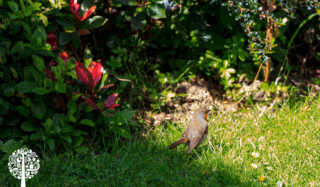Integrated Pest Management: Tips & Tricks
Integrated Pest Management (IPM) takes an ecosystem approach to pest/disease management. It focuses on the long-term prevention of pests and diseases with multiple types of practices to reduce reliance on pesticides. Pesticides are always the last line of defense in the philosophy of IPM, not the first, because building resistance to pesticides is not a matter of “if” but “when” and how fast. Also, IPM accepts pests/diseases as part of the natural system.

Creating Balance
Having any pest or pathogen in our garden can make us uncomfortable. We want to eradicate all threats and sterilize pests and diseases from our cultivation spaces. Still, a balance of pest/disease presence versus the tipping point of unacceptable proliferation and damage is a crucial threshold for cultivators to understand and embrace. Without some pest presence, you will not have the prey-specific beneficial predators and parasites you want in your garden to assist in controlling that pest. In a sterile environment, a plant may not trigger the biological and chemical responses needed for a heartier, healthier, and higher-quality crop.
Know Your Environment

Get to know the environment that surrounds your cultivation space. Teach yourself about your area’s various pest and disease risks, the native soil type, how the water moves above and below ground through your location, the parameters of your climate and weather, and the surrounding vegetation, organisms, and habitats. Do you know the name of the watershed you are cultivating in? Find out! Whether it’s acres or a backyard, urban or rural, or even if you are growing indoors, knowing the environment and what it may bring to your garden will inform your IPM choices and build a more conscious value for the resources in your region that make it a success.
IPM Strategies
All IPM strategies and practices are based on the type of pest and disease risk experienced in your cultivation ecosystem and what your crop needs to thrive. Therefore, all cultivators must develop a foundational knowledge of the pest and disease risks posed by their environment and plants, as well as an understanding of your crop’s nutritional and biological needs. Traditionally, IPM practices are defined into four categories to help growers select effective techniques they can appropriately implement in their growing spaces. The four IPM categories are cultural management, mechanical management, biological management, and chemical management.
Cultural Management
Cultural management includes practices focused on keeping plants healthy and stress-free. The most important cultural practices you can implement are selecting plants with healthy genetics well adapted to your site conditions, proper soil nutrient management, and routine stress, pest, and disease monitoring. Other cultural practices may include crop rotation, interplanting, trap crops, weed control practices, and the proper timing for planting and pruning. The bottom line is prevention; being proactive rather than reactive is vital.
Mechanical Management

Physical and mechanical methods include fences, screens, barriers, or traps. Good hygiene is also essential, like cleaning tools between plants and working from the healthiest to the sickest plant. Physical responses like pruning, debris removal, handpicking or knocking pests off plants are also involved. These methods work well for a smaller garden or high-value crop, but they often require a lot of time, and depending on the size of your operation, it may not be easy. Everything is always a balance, and developing that action threshold is a nuance that is important to embrace. Large-scale producers do this with economics and cost-benefit analysis so that the action threshold becomes very black and white to their production. Smaller-scale or hobby growers may have a more intuitive approach to this threshold. Still, we should always develop some key tipping point clues for action, like noticing pest populations increasing quickly or the pest spreading from one plant type to another.
Biological Management

Biological management uses predators, parasites, or disease organisms to control pests. When monitoring, note beneficial insect predators and parasites that you are seeing. Including plants in your cultivating environment that attract and harbour beneficial insect predators is another tactic of biological management. Having beneficial species that naturally populate themselves is ideal. These can be acquired at a garden store if your natural populations need a boost or a specific predator or parasite. Predators are pest-specific, so proper pest identification is critical. Disease organisms are pathogens that target the pest you are treating. They are often bacteria-based and target a specific pest, so correct identification is needed.
Chemical Management
Chemical management is the last resort; the treatments you apply after deciding that all other management routes have been exhausted, the damage is too severe, or the risk of loss is too great. Insecticides and fungicides are used to control these acute pest and disease situations. Using these practices sparingly is ideal because pests will build resistance to the product causing populations to recover and become even more problematic. Another drawback to chemical management is that many of these products will kill beneficial insects and the pest, effectively destroying the balance and biodiversity you have worked so hard to maintain.
Five Tips to Succeeding at IPM
So how do you do IPM? Some very basic steps can be taken away from the concepts just discussed.
- Monitor routinely – correctly identify pests and beneficial insects, learn biology and lifecycle, and keep logs.
- Set action thresholds so you know when you are reaching that tipping point of pest presence to pest nuisance.
- Learn and implement prevention for your site-specific garden.
- Evaluate results. What happened? Did it work? And (again) keep notes!
- Observe, consider, and then decide.
That last tip is probably the most important. So often, I see smart and experienced cultivators get in their heads about how to manage a situation. They project an internalized idea or bias onto their crop, and these strategies often fail. When assessing a management issue, give space for observation and consideration before making decisions. The land, the plants, the insects, and the animals will show you how to operate in their world more effectively rather than asserting our ideas upon them.




